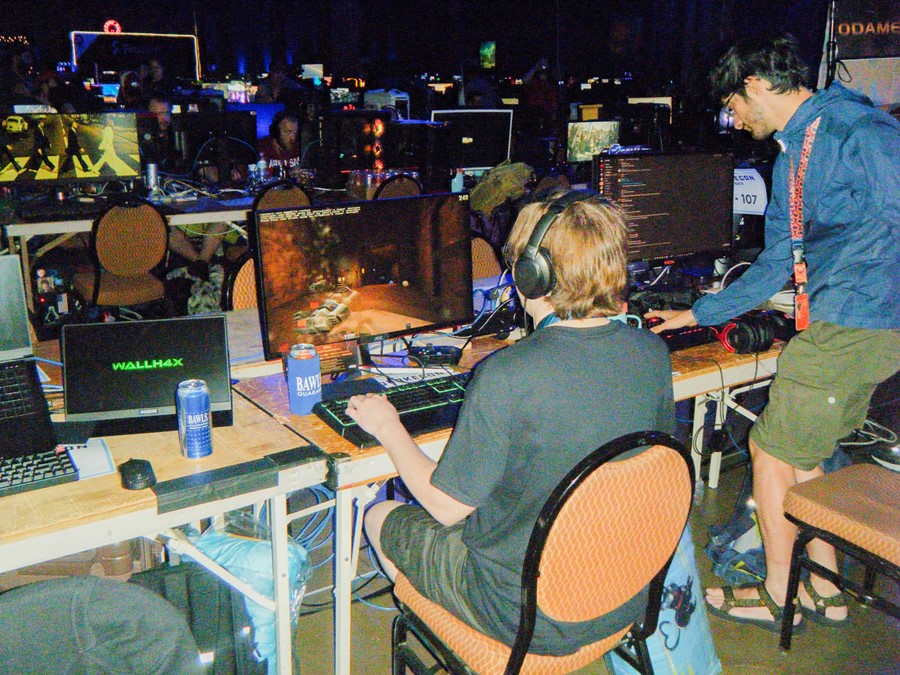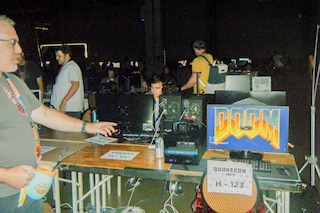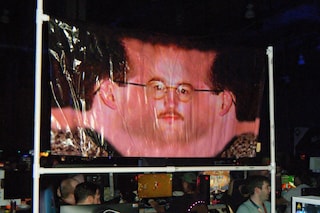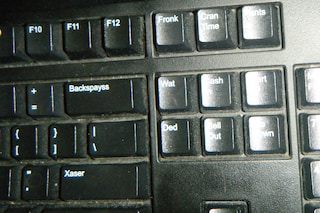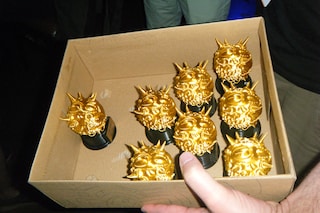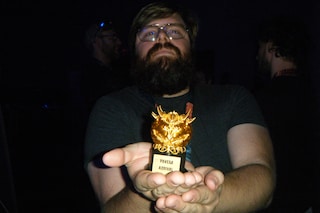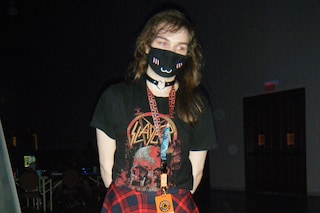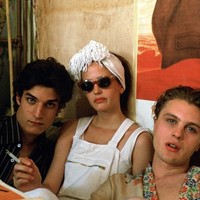Every year, thousands of gamers from across the world gather at the Gaylord Texan Resort to wire up their PCs, guzzle energy drinks, and blow each other up with virtual rockets
It’s August 2023 and I’m at QuakeCon, the biggest LAN party in North America. Under the climate-controlled dome of the Gaylord Texan Resort – a massive hotel and convention centre just outside of Dallas, Texas – over 3,000 gamers from across the globe are about to wire up their PCs, guzzle BAWLS, talk shit, and blow each other up with virtual rockets. This is the most important pilgrimage of my gaming career, because today is the first time I will meet IRL the people I have been playing Doom with for almost two decades.
For those who are unfamiliar, Doom is a first-person shooter game from 1993 made by a handful of guys who go by the name id Software. Beginning on the moons of Mars and finishing in hell, the player assumes the role of a space marine commonly referred to as Doomguy, who spends his time fighting off unalive humans and ultra-violent demons.
But Doom is also one of internet culture's primary texts, with an iceberg so deep that it burrows through the seabed and into Earth’s molten core. It’s the first real example of PC gaming, the cultural artefact that introduced multiplayer, speedrunning and modding to millions. It also has the sort of hyper-dedicated online community that was at one point the raison d’etre for the World Wide Web – in 1995, Doom was installed on more computers than Windows.
I joined the Doomworld forum around my 14th birthday, and for the next dozen or so years, it became the social and artistic crucible for how I saw myself and the world around me. Doom is a prime example of the early internet, representative of a time before social media homogenised the web into global villages to sell our identities as extensions of our ‘real’ selves in AI-optimised bytes. Back then, the internet comprised networks of forums and IRC channels and niche fansites. Gaming servers felt more like fiefdoms, with their own unique set of micro-cultures and customs. The Doom community itself was a prime example of this: each player was anonymous, and any fame accrued from the game was only recognisable within a small corner of the scene.
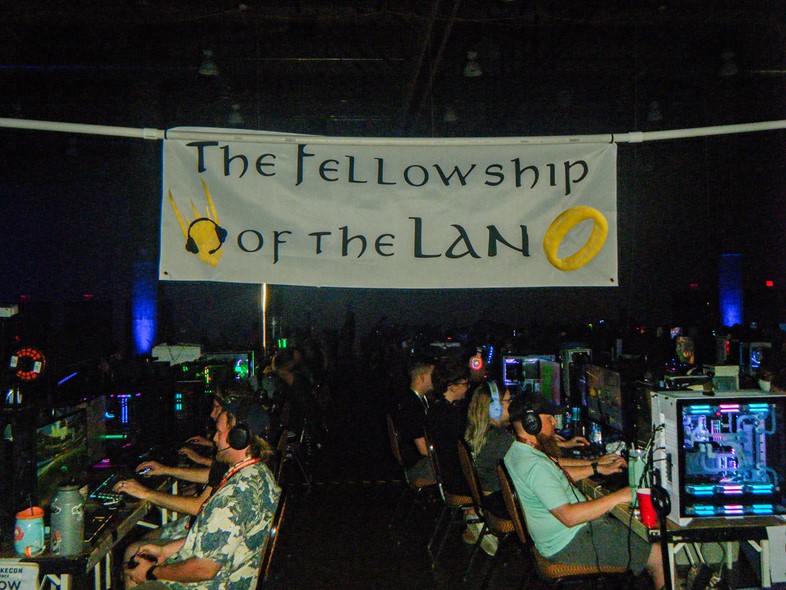
QuakeCon is an unusual social scenario. It’s the sort of nerd safe space that feels more akin to a sci-fi convention, or a WWII reenactment, than any average meet-up. There’s nothing conventionally ‘cool’ about QuakeCon or its attendees, but for me, QuakeCon might be one of the last truly subcultural spaces in America.
There’s a handful of relics within the Doom community that have been passed down from generation to generation. Among them is Hissy, a goofy plushie of the red Cacodemon monster from the game, which was created by a modder named Chrozoron between 1994 and 1995. This mascot is bestowed to one doomer every few years – the current owner is a master programmer named Kaiser, who’s been in possession of the doll for 1,477 days. On the day of my visit, Kaiser informs us that a very important ceremony is about to take place. The room falls silent as he hands Hissy to another celebrated Doom community member, an artist who goes by the username Scuba Steve, who proceeds to deliver a heartfelt speech.
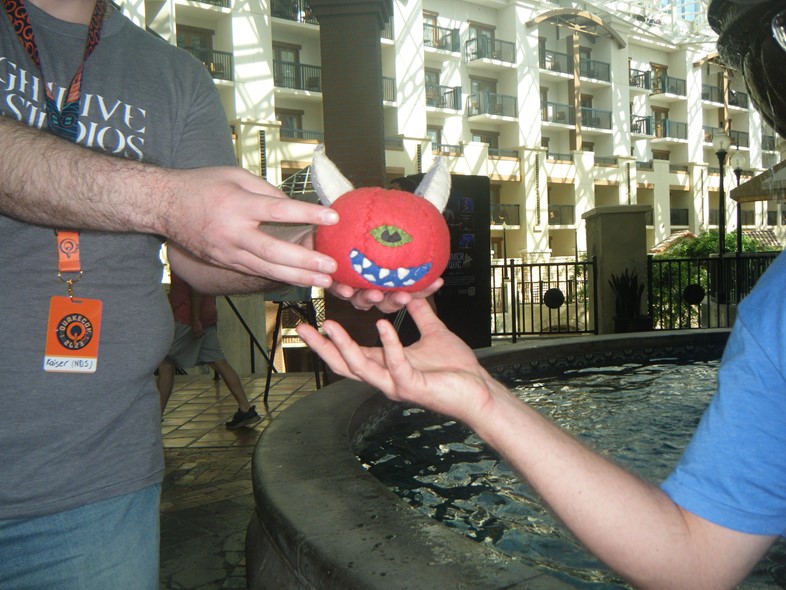
Legendary Doom community members fill the IRL halls for the convention centre. There’s Xaser, nicknamed “the Doom community’s truest polymath”, who delivers lectures on his personal philosophy, and shares unrealised maps from the fantasy action game Heretic, based on a modified version of the Doom engine. Scuba Steve awards physical trophies to the winners of The Cacowards, an online awards ceremony that celebrates the year’s most prominent in-game modders, while famed speedrunners Dew and 4Shockblast run co-op trials of a lunar-themed Doom mod.
On Discord, Scuba Steve notifies me that John Carmack, one of the creators of Doom and one of the most famous computer programmers in the world, has arrived at the convention hall. I hurry over to meet my friends before the mob begins to form, as he launches into a conversion about binary space partitioning and other coding esoterica. Again, this is typical of the Doom community: the creator of the game would rather talk shop with fellow programmers than be treated like a celebrity. As we assemble for a group photo, I think to myself that this is the first time we’ve all met on this side of the screen, and perhaps the last time for a while – or, at least, next year.
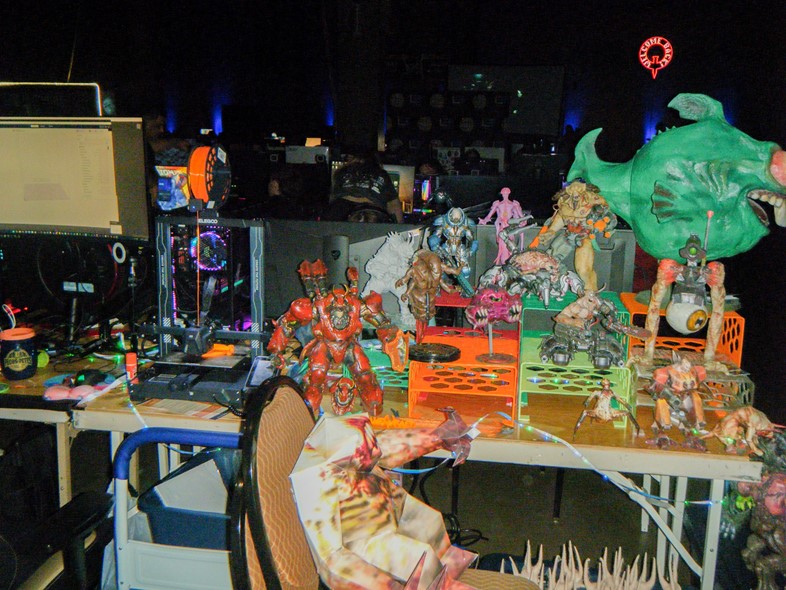
Join Dazed Club and be part of our world! You get exclusive access to events, parties, festivals and our editors, as well as a free subscription to Dazed for a year. Join for £5/month today.
